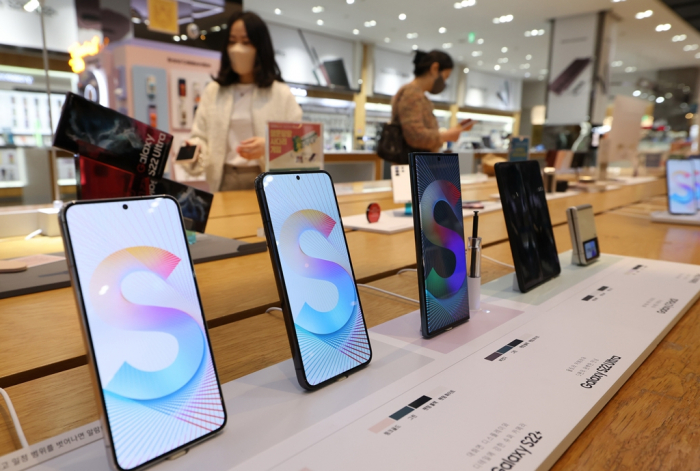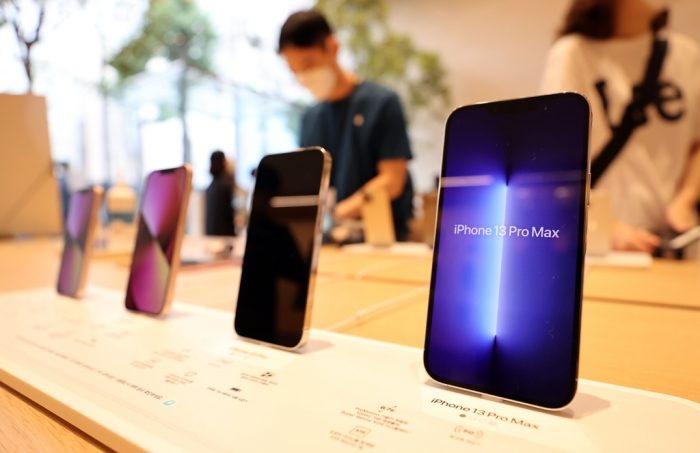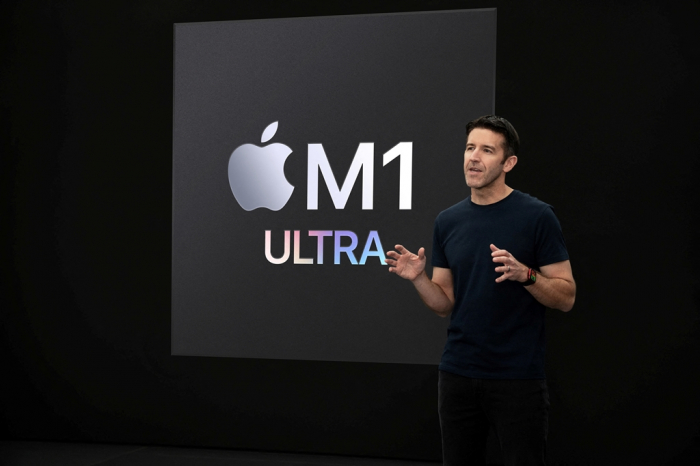Tech, Media & Telecom
Why Samsung is so far behind Apple
Samsung's 'fast follower' strategy no longer works in terms of connectivity and software
By May 02, 2022 (Gmt+09:00)
6
Min read
Most Read
LG Chem to sell water filter business to Glenwood PE for $692 million


Kyobo Life poised to buy Japan’s SBI Group-owned savings bank


KT&G eyes overseas M&A after rejecting activist fund's offer


StockX in merger talks with Naver’s online reseller Kream


Mirae Asset to be named Korea Post’s core real estate fund operator



In October 2012, US tech giant Apple Inc. fired Dominique Oh, the head of its South Korean unit. This was due to Apple's sluggish sales in the home country of Samsung Electronics Co., which dominated the local smartphone market the year previous.
Samsung and Apple have had a long rivalry in the global smartphone market. The South Korean tech behemoth is still the top player in terms of shipments. But Apple is the unrivaled No. 1 maker in terms of sales value.
Apple’s smartphone sales value was 2.7 times Samsung's last year, far wider than 1.9 times in 2017, as Apple’s average selling price stood at $825 per unit, more than triple Samsung’s $265.
“They once competed against us even with a patent war, but they don’t appear to care about us now,” said a Samsung’s senior executive. “They seem to be in another world.”
Investors had concerns about Apple’s future when Tim Cook took the helm as chief executive officer just before Steve Jobs died in 2011. Some critics booed his new products, saying they were not innovative.
But Apple never stopped growing. Its market capitalization surged to $3 trillion in January from $349 billion in 2011. This number has shrunk to $2.6 trillion as of April 29, but that’s still more than eight times Samsung’s 401 trillion won ($320 billion).
APPLE’S OWN ECOSYSTEM
Apple has established its own comprehensive ecosystem covering both hardware and software. A user needs only one ID to use and connect all their Apple products, whether iPhone, MacBook, iPad or Apple Watch. The ecosystem helped Apple expand its presence in other sectors such as the financial and entertainment industries. It is hard for competitors including Samsung to apply such a strategy since they use different operating systems such as Google's Android and Microsoft Windows.
Apple has also established a system for mass production of small varieties of products through streamlining parts. It designs its own chipsets and components for smartphones and PCs, spending $21.9 billion last year in research and development.
“Apple’s strategy based on a strong ecosystem that is difficult to break out with a loyal customer base is working,” said an industry source in Seoul. “It is better to follow their process of creating and achieving a roadmap for the future.”
Samsung quickly caught up with Apple by utilizing a “fast follower” strategy in the global smartphone market. Samsung has been the world’s top maker in terms of smartphone shipments since 2011. But the South Korean company has been struggling with its expansion into other sectors, while Apple has established its own ecosystem based on iPhones to extend to other devices such as iPads.

Apple is widening gaps with Samsung in all smart device sectors. The iPad accounted for 34.2% of the global tablet PC market last year, about double Samsung’s 18.3%. Apple’s AirPod series overwhelmed Samsung’s wireless earbuds with a market share of 25.6%, far higher than Samsung’s 7.2%. Apple Watch's market share was 30.2%, about triple Samsung’s 10.2%.
MASS PRODUCTION OF SMALL VARIETIES OF ITEMS
Industry experts said Apple widened the gap with Samsung thanks to its mass production of fewer varieties of products.
Jobs reduced the number of laptop lineups to four from several tens in 1997 when he became CEO of Apple, which was on the verge of a collapse.
He pledged to the board of directors to make and sell only four products – general desktops and laptops, as well as professional desktops and laptops. Apple revived in the following year on the success of the iMac.
Apple is still based on four product lines now. The company releases only four or five products a year although it dropped its single product strategy with the iPhone after Job’s death. That compared with its competitors such as Samsung and Xiaomi Inc., which launch tens of lineups annually, from cheap models to high-end products. Apple applies a similar strategy to other products such as the iPad and the AirPod.
Apple also shares many components. The company equips the latest iPhone 13 series and the low-end iPhone SE released this year with the same chipset developed itself, the A15 Bionic Chip, as an application processor (AP). The iPad uses the same chipset. On the other hand, Samsung uses various APs including its own Exynos depending on product prices.
The A15 Bionic’s performance is better than others such as Qualcomm Technology Inc.’s Snapdragon 8 Gen 1, industry sources said. But Apple could cut costs through mass production since all iPhones have the chipset.
“Sales of 200 million iPhones means sales of 200 million chipsets,” said another industry source in Seoul. “Other companies cannot keep up with its price competitiveness as it is the highest-performing and most sold chipset as a single item.”
SAME CHIPSETS TO EXPAND ECOSYSTEM
Apple sticks to its strategy to use the same chipset for PCs. The company had been using Intel Corp.’s chipsets for its PCs since 2005. But it developed its own to expand its ecosystem and unveiled the M1, an ARM-based system on a chip (SoC) in October 2020.
The company was known to have actively acquired companies with semiconductor technologies to make its own and replace Intel’s products since 2012.
CPU producers for desktops such as Intel and Advanced Micro Devices Inc. (AMD) usually use the x86 architecture, while mobile devices use the ARM architecture. Apple’s AP is also based on the ARM, raising the connectivity of PCs with other devices such as iPhones and iPads. In addition, that allowed users to operate iPhone applications on their PCs.
The ARM architecture improves performance with less power, raising the efficiency of MacBook’s batteries. Apple expanded the M1’s use to high-performance iPads.
It launched the M1 Ultra for professional products in March after unveiling the M1 Pro and M1 Max.

THE ONLY COMPANY WITH BOTH HARDWARE AND SOFTWARE
Apple could build up such an ecosystem with vast investment in R&D. It spent $21.9 billion last year, more than double the $10 billion in 2016. Samsung invested 22.6 trillion won ($18 billion) in R&D last year, but that included spending on semiconductors and home appliances.
The size of Apple’s R&D manpower is also much larger than that of Samsung.
“Apple does not make its own products, but it has about 20,000 staff for R&D,” said the senior executive of Samsung. “That is more than 10 times of Samsung with about 1,500 R&D staff.”
The industry expected Apple to expand its product ecosystem based on the same chipset architecture to other areas such as electric cars and augmented reality.
The M1 Ultra, two M1 Max chips connected together, shows Apple can connect several chipsets simply to make products that require high-performance computing such as self-driving cars. The same chipset architecture is predicted to raise connectivity among various devices based on the same operating system.
“Apple is the only company that developed its own hardware and software to create a large-scale ecosystem around the world,” said the other industry source. “It would have been difficult to achieve this without the support of a corporate culture that steadily performs according to a long-term roadmap.”
Write to Seung-Woo Lee at leeswoo@hankyung.com
Jongwoo Cheon edited this article.
More to Read
-
 Tech, Media & TelecomSamsung touts latest Exynos 2200 chip as mobile game changer
Tech, Media & TelecomSamsung touts latest Exynos 2200 chip as mobile game changerJan 18, 2022 (Gmt+09:00)
3 Min read
Comment 0
LOG IN


